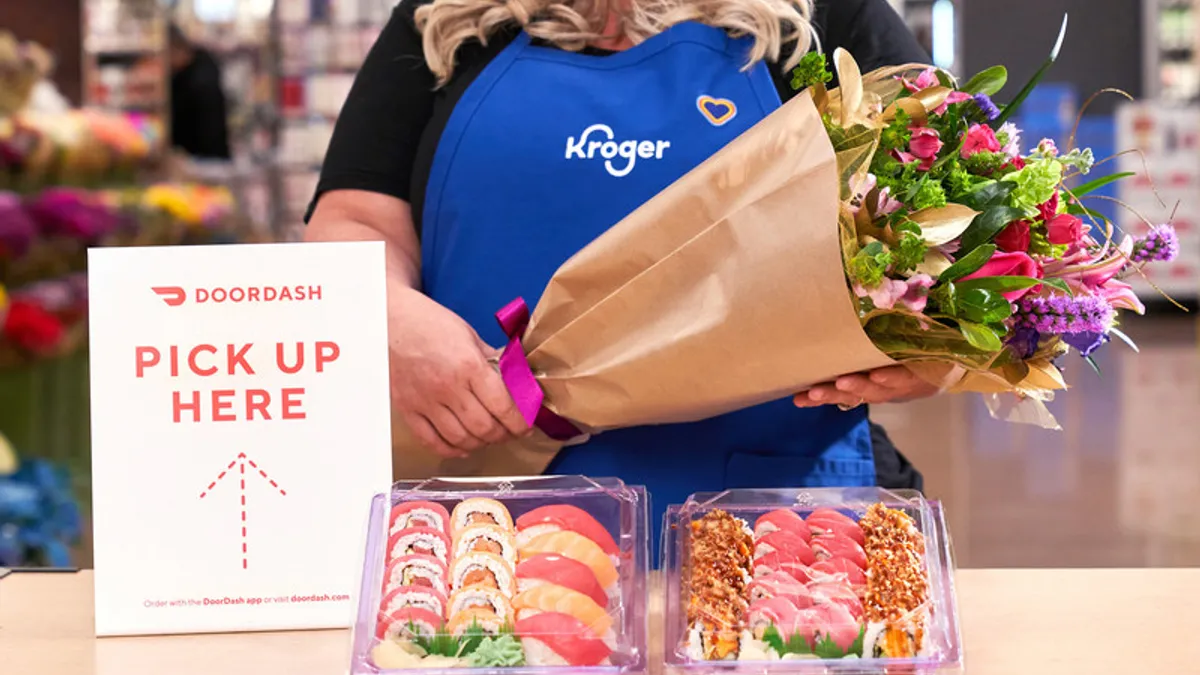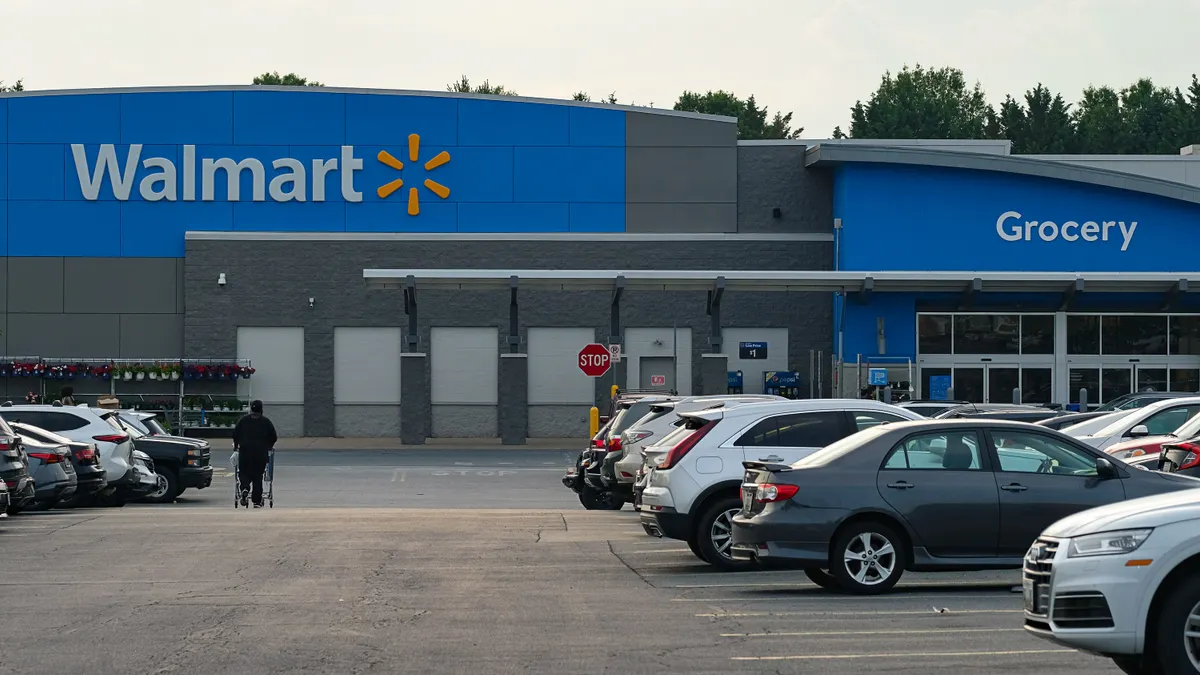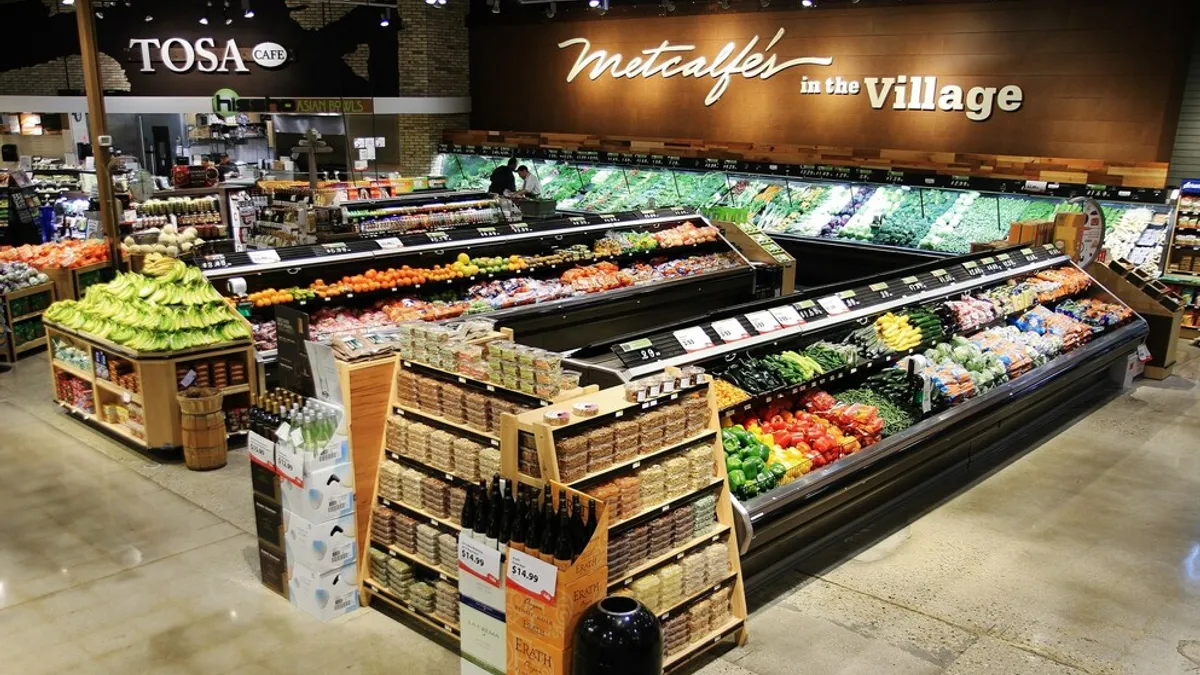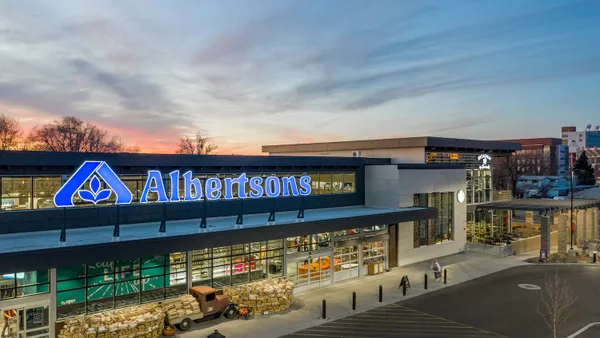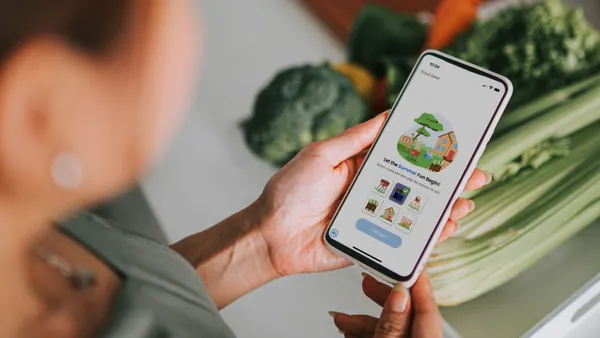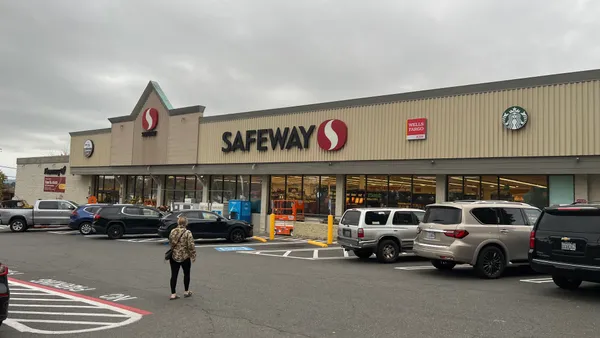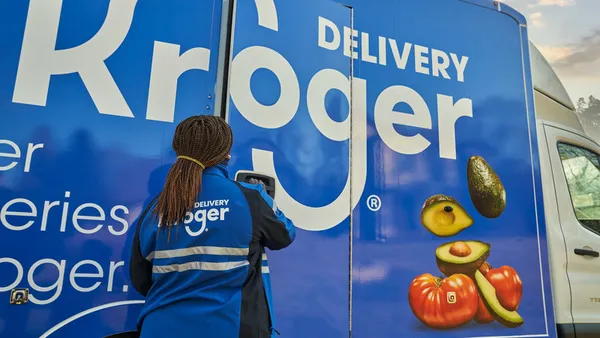DoorDash didn’t initially focus on grocery delivery, but as the e-commerce company builds out its roster of supermarket partners, it’s finding continued room for growth.
DoorDash announced on Monday the addition of four grocery partners: 10-store Chicagoland grocer Angelo Caputo’s Fresh Markets; 42-store Festival Foods in Wisconsin; 19-store Woodman’s Food Markets in Wisconsin and Northern Illinois; and 60-plus-store Marc’s in Ohio.
The company’s grocery vertical, which it added in 2020, is poised to be “a great area of growth as well as profit driver” over the next few years, CFO Ravi Inukonda told investors on Feb. 11.
In the Monday press release, DoorDash noted that all of Ahold Delhaize’s U.S. banners, all Wakefern Food Corp. banners, and a bevy of other chains such as Haggen, H Mart, La Michoacana, Rouses Markets, Save A Lot, Vallarta Supermarkets and Wegmans joined its platform in 2024. Currently, more than 99% of DoorDash's monthly consumers in the U.S. have access to a non-restaurant retailer on the company’s marketplace.
Earlier this month, DoorDash said it rolled out acceptance for SNAP payments to eight banners, including Wakefern Food Corp.’s ShopRite banner and BJ’s Wholesale Club.
DoorDash CEO Tony Xu told investors recently that customers who initially came to DoorDash for grocery needs such as small top-up orders are now buying larger baskets that address “all of their use cases,” noting that spend is growing for each recurring customer.
“Grocers see that the business that we bring and the customers that we bring is very incremental to what they see through their own channels as well as with other partners. And so I think all of these things have been very strong indicators that we're on the right path,” Xu said.
Xu said grocery delivery is still nascent in the U.S. in comparison to its penetration in other countries.
“We still feel like we’re super early in terms of what grocery delivery should look like,” he said.
As DoorDash looks to tap into the remaining e-commerce opportunities, the company is looking to add more SKUs, improve accuracy, increase product affordability and improve inventory management, Xu said, adding that it’s important to match “the right type of Dashers who want to do grocery deliveries with actual grocery orders.”
“[T]here still remains a lot of product improvement left. We’re really satisfied with what we've done in ‘24 and in the years prior, but there’s a long way to go,” Xu said.



